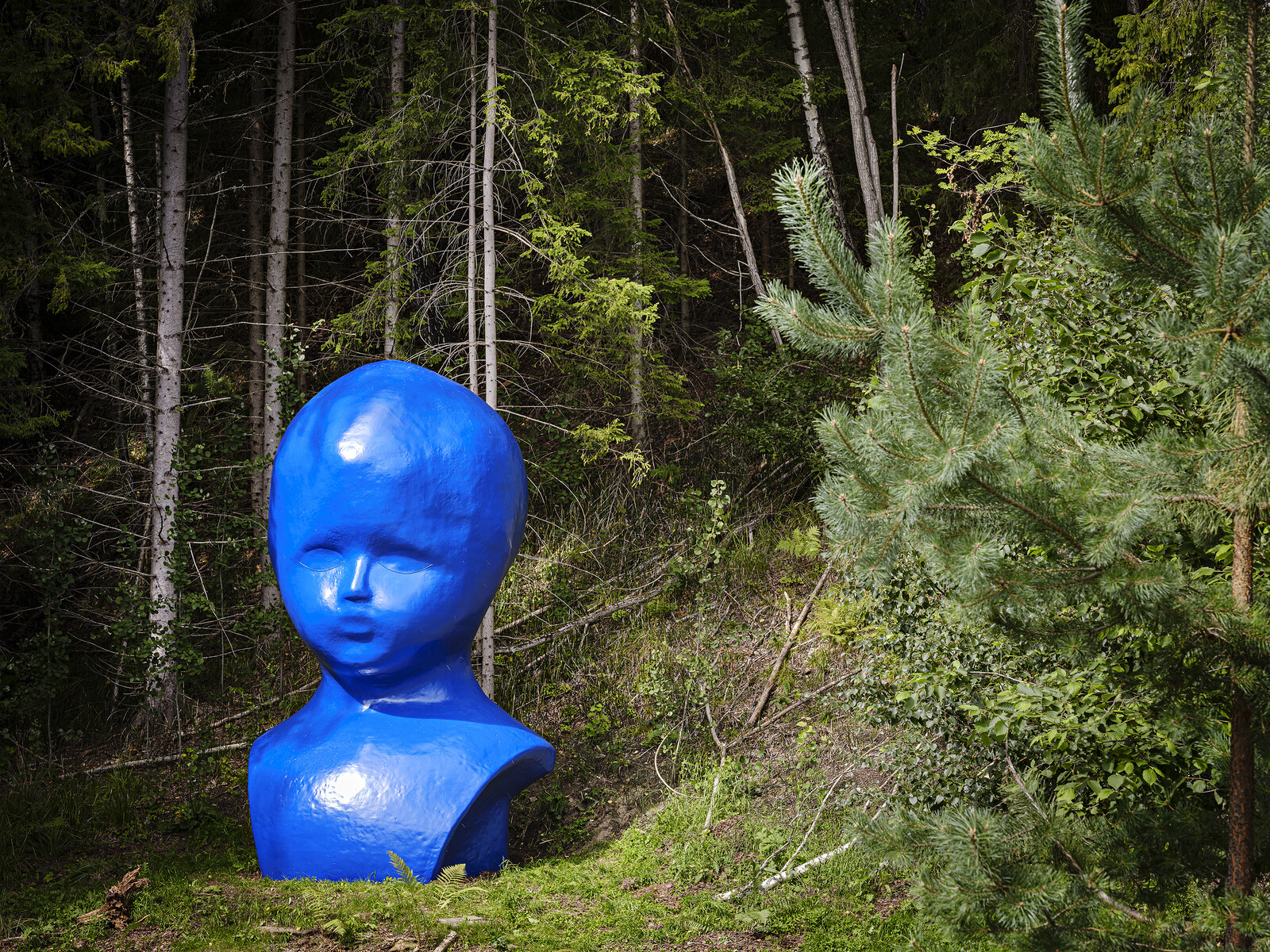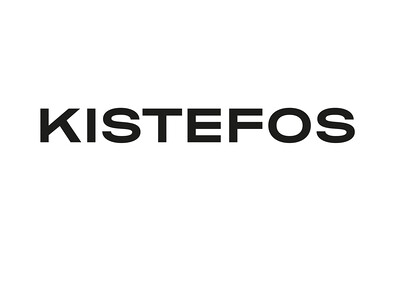August 16, 2023, 5pm
Kistefos is pleased to announce Marianne Heske as sculptor of the year. Heske has worked as an artist for over 40 years, and is considered a leading figure in Norwegian conceptual art. She works with graphic techniques, photography, screen printing, collage, installation and sculpture.
The bronze sculpture Blue, which will be unveiled on August 16, at Kistefos, is a continuation of Heske’s work with the doll’s head, a recurring motif in her art since the 1970s. The sculpture, which cries at irregular intervals, will be Heske’s second artwork in the sculpture park joining Homage to Leo the Lion (2006). Blue is located at the exit of The Twist on the north side of the river Randselva, and incorporates an amphitheater in the surrounding area.
When Marianne Heske’s latest work is unveiled—a monumental doll’s head painted and entitled Blue—it will be over fifty years since the humanoid object made its entry into Heske’s artistic universe. The story is as well-known as the doll’s head is iconic: As a young art student in Paris in the early 1970s, strolling through one of the city’s flea markets, Heske was drawn to a box filled to the brim with tiny doll’s heads. There they were, mass-produced and almost identical: designed sometime in the 1920s for the little girls of that era, delicately crafted in papier-mâché, but fifty years later discarded and without bodies. However, after going home with the young artist the doll’s head was given a new lease of life and has since then appeared in several of Heske’s most prominent works. We find it in video and photo works, in prints, collages and performances, and as sculptures in different sizes and materials. Blue, as an exact formal replica of the original doll’s head, is the latest addition to the series of hundreds of doll’s heads created since 1971.
Beyond the form, however, there are several things that distinguish Blue from its Parisian predecessor. Most striking is probably the format: The head, which is cast in bronze, is about seventy times larger than the original from the flea market, and despite its explicitly anonymous features, it therefore appears massive and authoritative. The dimensions of the work inevitably bring to mind Head N.N. (2014), one of Heske’s most well-known doll’s heads due to its location in Torshovdalen. Also, an amphitheatre has been built around Blue that invites visitors to sit down and watch the doll’s head perform its silent message. But where the aforementioned skull is characterized by a phrenological map and has a title that insists on the absence of identity (the abbreviation N.N., nomen nescio, is Latin for “I don’t know the name”), the title Blue points to another prominent feature of the work, namely the clear, royal blue colour covering the surface.
Discreetly located in one of the sculpture park’s green groves, on the edge of the Randselva river, the consequence of the use of colour and the large format is that the work stands out as a foreign object in the natural vegetation. Blue is an unnatural colour in the sense that little in nature is blue, well-known species such as blue anemones, bluebells, and blueberries are actually closer to the violet. The colour is so unnatural that humans instinctively avoid blue food, and our appetites are diminished by blue light, presumably we associate it with mold. Moreover, our perception of colour is culturally conditioned, and in Western culture the colour blue has been associated with melancholy and gloom since the mid-1800s, an association referred to in a wide range of art from the past century in particular. Picasso had his blue period while struggling with depression (1901–04), Joni Mitchell released the album Blue (1971) about troubled love, Krzysztof Kieslowski’s art film Three Colours: Blue (1993) shows a woman in deep emotional crisis, and in her poetry collection Bluets (2009), Maggie Nelson delicately explores existential themes. These examples lead us on to Blue’s third, prominent distinctiveness: If you remain sitting in the amphitheatre that surrounds the sculpture for a while, you will discover tears flowing from the eyes of the doll’s head at random intervals, tears that confirm what the title and colour insinuate: Blue is sad.
Are the tears emotional, theatrical, or are they political? Despite the fact that Heske has actively avoided positioning herself politically, she is a socially engaged artist, and the doll’s head that was reborn in the thoroughly politicized 1970s is undoubtedly a child of her time. In several of Heske’s earliest doll’s head works, the doll can be interpreted as a symbol of the oppressed woman. Here she joins a larger movement in which a number of artists—prominent figures include Niki de Saint Phalle (b. 1930), Laurie Simmons (b. 1949) and Cindy Sherman (b. 1954)—take ownership of the doll as a symbol of femininity and process it artistically in a feminist perspective. In later doll’s head works, Heske’s doll figure appears to a greater extent as a puppet or mask, shedding critical light on themes such as individuality in the age of mass media and vulnerability in the face of modern dogma. For Heske, the doll’s head represents humankind. By constantly displacing and presenting the doll’s head in different periods of her artistic oeuvre, through decades where historical and cultural context is constantly changing, she allows the doll’s head to subtly reflect the human being and its era. In Heske’s portrayal, the doll becomes an image of the human being contemplating what it means to be human.






